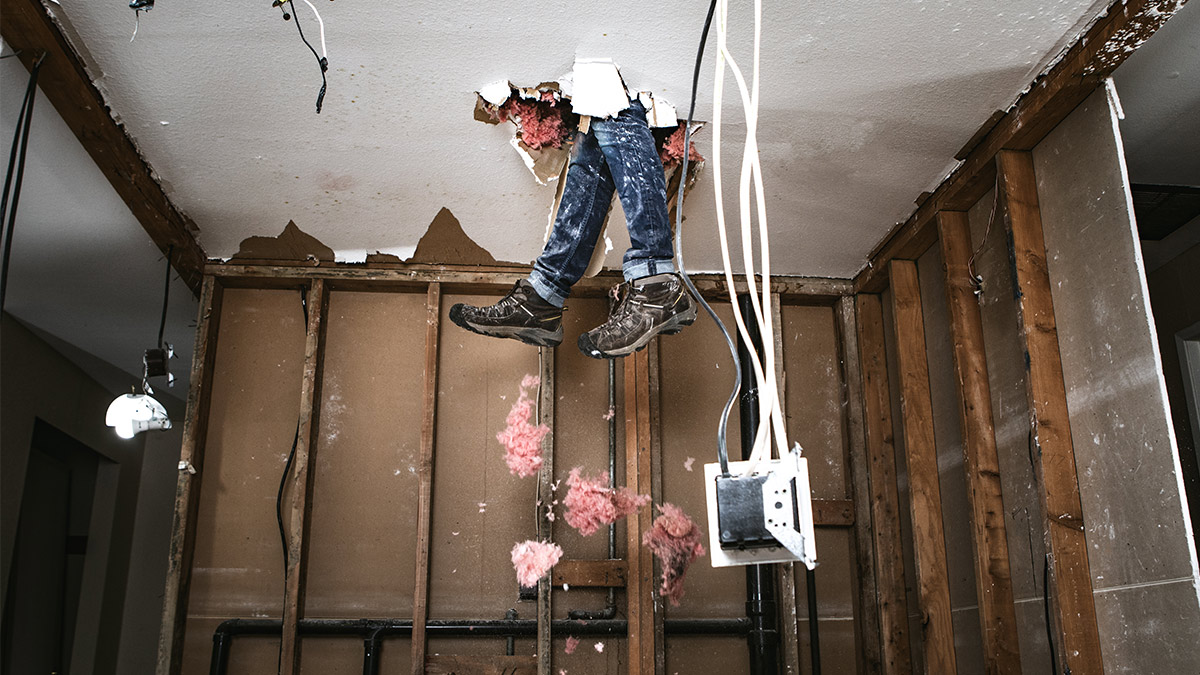Oneflare takes a data-driven approach to digital home improvements

Oneflare estimates there's an addressable market of more than 70m home improvement jobs in Australia each year. (Pic: Getty)
For many people with household jobs that need fixing, the days of picking up the YellowPages and looking for a suitable tradie are long gone.
As with many other sectors, the process has been digitised.
YellowPages has moved online, but it’s now competing with companies such as Oneflare, HiPages and Airtasker to fill that digital gap.
It’s an addressable market that’s big enough for investors to take notice, with HiPages set to join the ASX boards in a listing later this week.
To get an understanding of how digitisation is affecting the job referral market, Stockhead caught up recently with Oneflare CEO Billy Tucker.
Tucker came on board with Oneflare in February 2017, shortly after the company took on a $15m investment from Domain Group.
And to get its slice of the digital job referral pie, he said Oneflare is taking a data-driven approach.
“When I arrived at the company, what I found was it did two things exceptionally well,” he said.
“One was SEO (search engine optimisation). So Oneflare’s ability to get found in Google across 280 different home improvement categories was really high.”
“The second thing I found was a really strong dataset. At that point there were five full-time people working in data analytics, which for a company this size is quite an investment.”
“So when I arrived we already had five billion records that we could use to identify patterns which help optimise the platform.”
Addressable market
While there are a number of players looking to build scale in the sector, it’s not a market that’s sprung up overnight.
For example, Oneflare is coming up on a decade of operations after being founded in 2012.
But Tucker said a big chunk of the market is still up for grabs, as the process of online quotes and jobs requests becomes second nature.
“We think there’s around 9.3 to 9.4 million households in Australia, and on average those households get seven or eight jobs done a year of varying types,” he said.
“That means there’s already about 70-74m jobs getting done. And that’s excluding basic weekly jobs such as cleaning.
“Now, between us, HiPages and Airtasker, we collectively will control around 4m of those jobs.
“So we’re looking at a 20x increase in the total addressable market, for three companies that are already claiming to generate multi-million dollar revenues.”
He also cited a strong COVID-19 tailwind, where travel closures have helped divert resources to home improvement projects.
In that context, sectors such as plastering, building, fencing and landscaping have seen a 50 per cent uplift from the prior year, Tucker said.
“So all those sort of meaty home improvement jobs that people want to get done — suddenly they’ve got cash in their pocket to go and do it.”
But while there’s a large opportunity in play, Tucker said Oneflare was happy maintaining its private structure, rather than accessing capital through the public markets.
“We’re still growing quickly and we’re at break-even or close to it, so we’ve got decent runway we don’t really need to raise extra capital,” he said.
“So I think for us there’s a 12-18 month journey ahead of us where we’re just going pursuing that aggressive growth strategy.”
He also flagged the extra disclosure requirements that come with being a public company, which can be “distracting and onerous”.
“So we don’t see that as an option for a long time to come.”
From complex to simple
If Australians are calling in for 70+ million home improvement jobs per year, it stands to reason that cutting through the noise is a key part of a successful job referral business.
Tucker said that for Oneflare, while the end goal – a quick and effective quote – is simple, the groundwork behind it is quite complex.
“If a customer comes to our site and opens up a job form it’s a simple interface. But the software behind that runs 1.5 million different job versions, depending on the intsruction,” he said.
“One question leads to another questions, and we use that job form to ask the optimum questions, so we can narrow in on specifically what each customer wants.”
In that sense, it’s not a market that’s necessarily built on speed like one-click consumer shopping sites.
“We’re asking the customer to answer more questions than they otherwise would. But that’s why we think our customers are worth quoting on, because they’re clearly in the market to get a real piece of work done,” Tucker said.
The company has also integrated a service used with success by other industry disruptors such as Uber – customer reviews.
“One thing the businesses on our platform really appreciate is our willingness to publish reviews. And that’s genuine reviews, both good and bad,” Tucker said.
“That’s a feature that’s not available elsewhere. And our good businesses are the ones who appreciate that review process, which will then be reproduced on their Oneflare business profile.”
And looking ahead, he said the key metric for the business will be the same as any other tech disruptor – getting the per unit economics to stack up.
“One overarching strategy we have is we recognise in order for us to become an essential partner we have to provide work for them at the lowest effective cost per win,” Tucker said.
“That means the cost per lead needs to be low as possible, their propensity to win needs to be high and the value of each job needs to be high.”
“So when they look back and think, ‘what have I spent on Oneflare and what did I get in return?’, that needs to be highest gap possible return relative to the competition.
UNLOCK INSIGHTS
Discover the untold stories of emerging ASX stocks.
Daily news and expert analysis, it's free to subscribe.
By proceeding, you confirm you understand that we handle personal information in accordance with our Privacy Policy.








